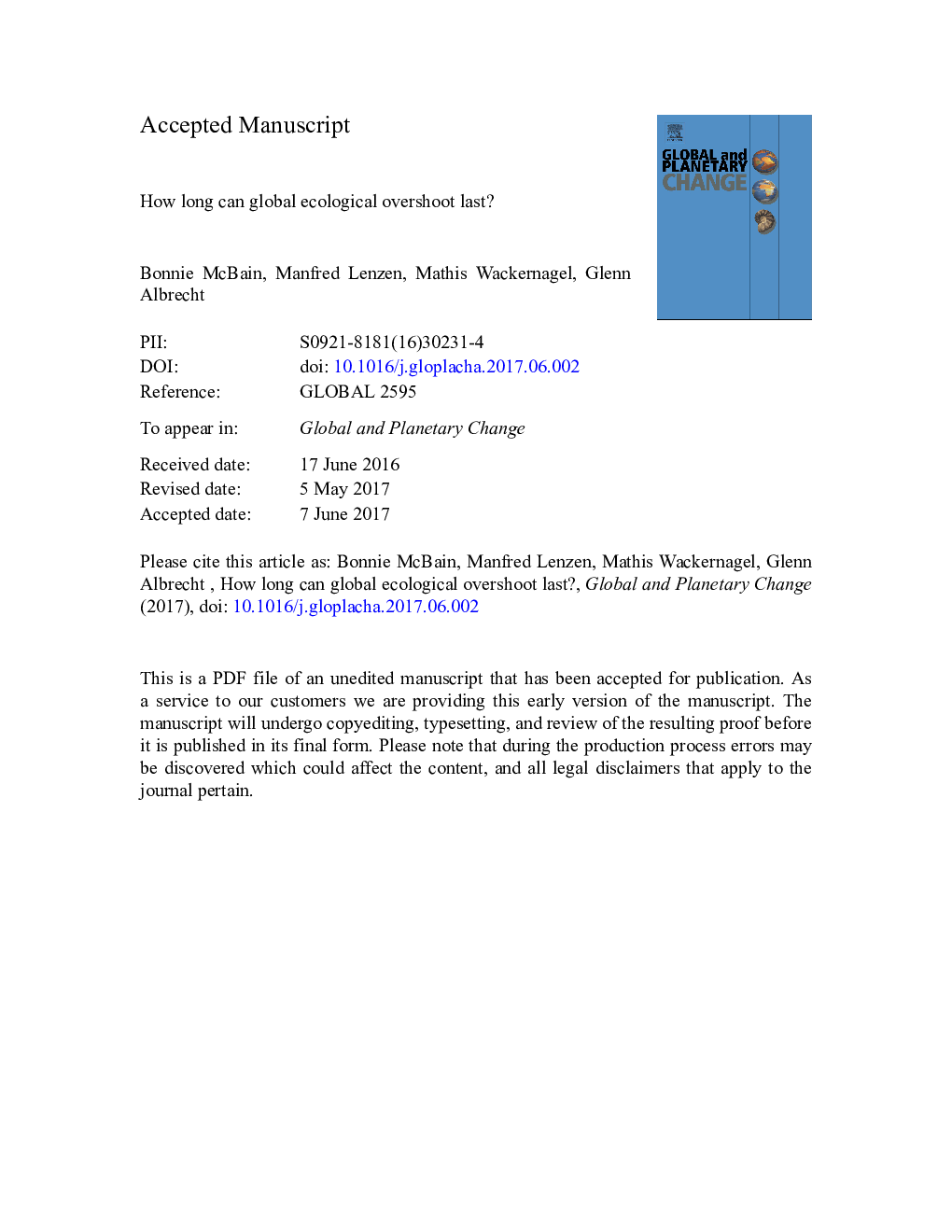| Article ID | Journal | Published Year | Pages | File Type |
|---|---|---|---|---|
| 5755249 | Global and Planetary Change | 2017 | 19 Pages |
Abstract
The ability of the Ecological Footprint to communicate complex environmental information in a clear and accessible way is well known; however, with growing environmental complexity, we will require increasingly sophisticated environmental indicators to inform our decisions. We have developed an integrated and dynamic global model to investigate future trajectories of the Ecological Footprint. Under a range of futures and without the mitigation of human resource demand, we find that the discrepancy between global demand and renewable supply of resources is likely to increase. Continued overshoot, although possible in the short term, means the global community is increasingly exposed to risks of environmental collapse due to the approach of at least two planetary boundaries relating to land use expansion and climate change. We show that, the Ecological Footprint trajectory and the time between the commencement of ecological overshoot and ecological collapse is sensitive to global technological, economic and population policy decisions. Importantly, this work presents a tool which can be used to support transdisciplinary decision-maker collaborations examining the risk associated with alternative policy options in the face of uncertainty at multiple scales.
Related Topics
Physical Sciences and Engineering
Earth and Planetary Sciences
Earth-Surface Processes
Authors
Bonnie McBain, Manfred Lenzen, Mathis Wackernagel, Glenn Albrecht,
